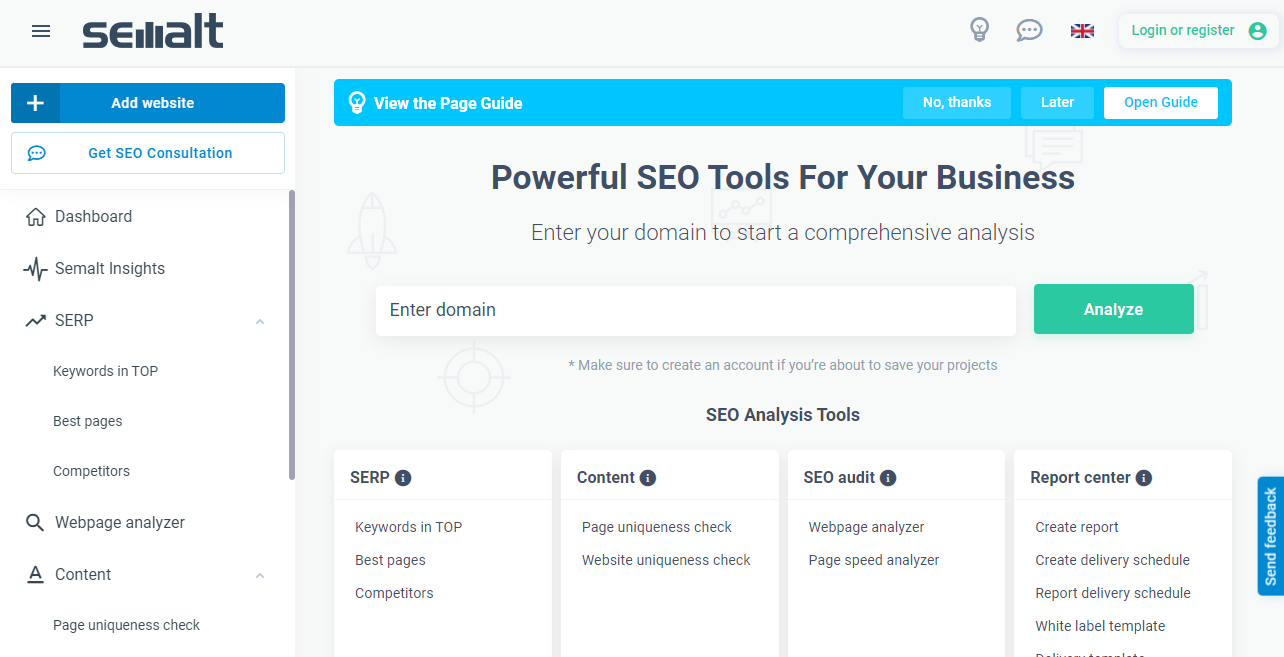Semalt Recommendations On How To Conduct Website Usability Testing
When can you tell if a website is useful and user-friendly? If a user visits your website, he or she is able to quickly verify whether the content presented on it corresponds to his or her query.
What the website looks like, how the individual elements are arranged, how the website's colours have been selected, as well as technical parameters, e.g. the speed of loading the content - all determine the usability of the website. Additionally, the usability of the website is an important factor in the functioning of an online business. Therefore, it is worth deciding to test the usability of your website and find out what works and what needs improvement.
How to check a website for usability?
When checking the website for usability, we must remember to care about the user first of all. It is the user who should have the greatest pleasure in using your website.
Therefore, it is good to have a functional, simple and easy-to-use menu, thanks to which it will be easier to find the information he or she needs. The clear layout of the website will also allow him or her to find his or her way around the website, especially since users usually scan, and glance around the site, focusing more attention on what catches their eye.
Remember that the appearance of the website is not only a clear layout and refined design. It is also about planning a place for advertisements so that they do not interfere with the use of the website and do not distract from the relevant content. It is also worth getting rid of cumbersome scripts and unnecessary animations.
Website usability testing - what are the possibilities?

1. Expert analysis
One method you can use if you want to check your website for usability is to seek help from experts. In many companies, there are separate departments responsible for web analytics.
Another option is to refer to an SEO agency that knows perfectly well that positioning without usability testing and web analytics does not work. The analysis carried out by experts will allow determining whether the appearance of the website (its design) is appropriate for the user, how the information architecture is arranged, what is the page layout and navigation, and whether the website is functional. The UX audit is carried out based on the experience of experts.
Expert analysis will identify basic errors and problems that hinder the use of your website. The task of the experts is also to test various solutions. When conducting an audit, the basis is to formulate certain hypotheses about the usefulness of the website. The hypotheses are based on statistical data obtained from Google Analytics and also rely on the experience of experts. The next step is to verify the hypotheses by using various tools like the Dedicated SEO Dashboard, e.g. applying A/B tests. Such an assessment of the website allows for the identification of elements that need to be changed or improved. In fact, the Dedicated SEO Dashboard is a simple and straightforward website audit tool. It provides you with information about your site's SEO, such as its loading speed, HTML errors, and click-through depth. This way you can drill down into the data to get actionable insights.

Many users say that the Dedicated SEO Dashboard is an advanced version of Google Search Console with a full range of technical SEO features. If you are managing a large site or an e-commerce site with many page types, this tool might be the best choice for you.
The Dedicated SEO Dashboard allows you to see areas of your site that have not been viewed to ensure that Google can access your site's content.
Experts can also test the website based on the heuristic evaluation. Thanks to this approach, they check, among others, if the user knows what changes appear on a given page and whether he or she receives notifications and how he/she understands all the information on the website.
One of the heuristic principles in this approach is also to ensure the user's freedom. This means that the user has the freedom to navigate and perform actions on the website. Another thing to analyze is the consistency of the page. Are the call-to-action buttons the same throughout the site, what shape they are and where they are placed? Thanks to the heuristic assessment, experts are able to analyze and check many elements of the website, and the consequence of these actions will be a page tailored to the user :)
2. Benchmarking audit
A comparison with the successful competition in the market may provide interesting information on the functioning of a given industry. It is good to aim high and use already proven solutions, so comparison with websites recognized as exemplary in a given industry is important. During such an audit, it is worth paying attention to the compactness, functionality and appearance of our competitors' websites. Let's not be afraid to learn from the experience of others, but also let's try to introduce our own solutions.
3. User behaviour
Who will provide us with valuable information about the usability of our website if not the users!? Seeing how they move around the site and what elements catch their attention will help improve your website. User behaviour can be checked by selecting a focus group and observing their behaviour by moderators assigned for this task or with the use of eye-tracking equipment. The second way is to remotely track their behaviour.
A survey with the participation of a moderator consists in determining specific tasks that must be performed by the surveyed group. In this way, we can determine whether the respondents easily perform the tasks assigned to them, whether they have no problem navigating the website, and whether they encounter difficulties in using the website at all. Another form of such research is eye tracking research which allows analyzing the visual path of the user who browses our website and thus reflects his or her decision-making process.
This method allows obtaining information such as: where the user focuses his or her eyesight, how long and on which areas he or she focuses his or her attention, and which he or she completely ignores, and how the arrangement of individual elements and their size attract the user's attention. Then a heat map is created. The colours on such a map have different intensities and correspond to the user's interest in particular areas of the website. Such a website evaluation is an expensive option, but you can find companies that specialize in such research.
Remote tracking of user behaviour focuses primarily on tracking the mouse movement on the website. Such a test can be performed using dedicated programs. Thanks to this, the mouse movement will be recorded, which will tell us how users move around the page, what they click on, what tabs they open or how they scroll the page. Saved traffic can also create the so-called heatmap that shows the places of the website that attract the most attention from users. This helps to put the most important information in such areas.
Website Rating Matters!

Creating your own website, regardless of whether you do it yourself or entrust it to specialists, always takes time and requires a well-thought-out concept. In many cases, it also turns out that despite the efforts and funds put into the design of the site, it does not fulfil its main purpose. It is not profitable, nobody visits it, and users don't want to spend time on such a site. This is where usability is crucial. Therefore, it is worth striving for perfection in this matter!
If you take care of the usefulness of your website, you can also take care of the increase in traffic. Traffic on the website is important information about its functioning for Google, which later translates into the website's position in the search results. Remember that the page should be intuitive so that the user knows what it is about and does not leave it after a few seconds. You do not want the bounce rate to increase, and unfortunately even the most valuable content will not keep the user on the page if navigating it is tiring for him or her.
A well-conducted usability test will provide a lot of valuable information, but most of all, it will translate into the functioning of your website. After all, we expect certain actions from the user who comes to the website, be it a purchase, reading an article or sending an inquiry. Evaluating the website will allow us to find out where to place a given call to action, what size the subtitles should be, etc. As a result, both the user and the website owner will be satisfied :)
